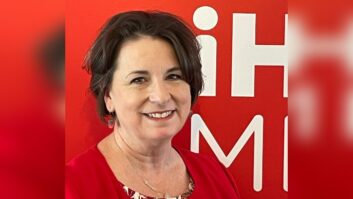The HD Digital Radio Alliance’s marketing campaign for HD Radio has been criticized in these pages as ineffective.
Some indicators tell a different story. Consumer awareness of HD Radio stands at 77 percent, according to a survey of listeners by Critical Mass Media cited by the alliance. In a separate study of current or likely auto buyers by J.D. Power & Associates, 31 percent said they want HD Radio in their next vehicle.
(click thumbnail)
Peter Ferrara, CEO of the HD Digital Radio Alliance, was quoted by FoxBusiness.com as saying, “We closed 2007 with consumer awareness at unprecedented levels. This year will see unparalleled numbers of receivers in cars and at retail, totally new data applications and new investments in HD2 and HD3 programming from broadcasters.
“Now is the time to convert consumer awareness into purchasing action.”
The trademarked name “HD Radio” is still a relatively new one, yet the alliance already touts consumer awareness of 77 percent. It took HD television time to become a must-have technology. It takes a while for such things to prove value to consumers. So what’s the problem?
We fear that the alliance and industry leaders are wearing pretty thick rose-colored lenses. Other researchers come up with different findings, which match our own anecdotal experience.
In the annual study “The Infinite Dial,” which considers trends in the use of digital platforms including podcasting and Internet radio, Arbitron and Edison Media Research conducted a national survey of 1,800 adults in January.
They found no growth in awareness for HD Radio (see chart), and said 66 percent of consumers are not very interested or interested at all, based on a description of the technology. The number who said they were “very interested” was a paltry 6 percent.
This is the result of two years of ad support in which the alliance has invested close to a half billion dollars in air time?
The study’s authors concluded that HD Radio does not appear to be attracting substantial numbers of consumers: “Less than one-quarter of the sample can recall seeing or hearing anything recently about HD Radio (down slightly from 2007) and only 6 percent of consumers say they are ‘very interested’ in the concept when it was described to them,” the study states.
“Those involved with HD Radio should find new ways to present the concept to consumers to trigger more response.”
A separate study from American Media Services similarly found that about a third of American adults say they are very or somewhat familiar with HD Radio.
“There’s no question that HD Radio has severe perceptual problems,” AMS Chairman Edward F. Seeger concluded. “The radio industry needs to do a better job communicating the technological and programming benefits of HD.
“With so many platforms available to radio listeners today, broadcasters must throw their total support and commitment behind digital audio or run the risk of losing audience — and consumer credibility.”
We agree. The national HD Radio marketing effort has flopped to date. It has lacked creative juice and failed to use all media to promote radio’s new tool.
The alliance is rolling out Phase II of its campaign, which carries the tagline, “It’s time to upgrade!” We have to ask whether this will be effective when more consumers aren’t aware or interested to begin with?
President/CEO Peter Ferrara says the radio companies in the alliance feel good about where HD Radio stands, but “We want to make it great.” He’s correct to push for “unparalleled numbers” of receivers in cars and at retail, new data applications and new investments in multicast programming. We think those changes are coming.
We also feel that real success for HD Radio will come when local stations start putting truly remarkable programming on HD2 channels and listeners start to tell each other about the great new secret stations they’re listening to and the smart radios they have in their cars.
And it’s true that the alliance’s hands may be tied by broadcast members who probably don’t want to pony up cash for TV promotion after having invested in digital equipment, aren’t yet getting ROI on their HD2 or other digital channels, are seeing flat sales revenues for another year and are having to pay more for their Arbitron PPM ratings than for the diary.
But the marketing effort of HD Radio has not been a success so far. Digital radio proponents need to acknowledge that consumer awareness remains low before we will feel better about their plans for converting such awareness into purchases in the next two years.
— Radio World













